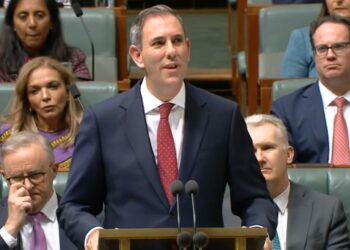The year 2022 is expected to be another devastating year for financial adviser numbers, with Adviser Ratings suggesting that another 2,387 advisers are going to make their exit across this calendar year.
This, according to research by Adviser Ratings and Vanguard, will take the universe below the 15,000 mark for the first time.
“Adviser Ratings has not been shy about making bold predictions on the direction of adviser numbers. Based on several inputs, including attrition to date, as well as the impact of education mandates and patterns in the UK after the Retail Distribution Review, we have long said the universe would fall below 15,000,” the Australian Financial Advice Landscape report reads.
But there is some good news on the horizon, with Adviser Ratings predicting yearly adviser departures will then slow, before stabilising in 2026.
According to its long-term forecast, the number of advisers in the industry would drop to 14,964 in 2022 and continue to decline to 12,271 in 2025.
However, interest in advice is not waning. In fact, according to the research, the number of client leads doubled in 2021.
Using its lead generation tools, Adviser Ratings said that more than half of the leads generated were over 55 years old, and almost 40 per cent were between the age of 35 to 55. But younger Australians too are said to be showing a willingness to get a handle on their finances earlier, with close to 1,000 leads coming from those under 35.
Adviser Ratings cautioned advisers not to ignore the young Australians given that this generation are set to become the beneficiaries of more than $224 billion a year by 2050.
But despite increasing interest in advice, there has been a further drop in consumers using a financial advice mainly due to the rise in adviser fees which are pricing out many Aussies who want or need advice.
The Adviser Ratings 2022 financial advice consumer survey found 65 per cent of prospective clients would only pay $500 a year for advice – about an eighth of the median adviser fee.
The report found that the median ongoing fee has increased by 41 per cent in the same period, rising from $2,510 to $3,529.
Comparatively, Adviser Ratings found that the average FUA per client has only increased 22 per cent, laying bare the stresses to run a profitable practice at the expense of Australians being able to access affordable advice.




Advice fees have increased, insurance costs have increased, the need for advice has increased while the number of advisers has decreased! Good job Libs.
During the whole FOFA news, the objective said Labor was to make advice accessible and affordable for all Australians…..woops….why is it that anytime a politican opens their mouth out comes the lies…fools who while knowing NOTHING about the topic in question or very little mess with an industry not for the sake of improvement rather to achieve their ideology….idiots
Hope people continue to leave, about 14,000 then people can make money from charging clients $6k minimum for a plan. Anything less than this is loss making in rough terms.
Accountants and money coaches will be able to do it a lot cheaper.
Good job ASIC but still work to do..probably a little behind on their target me thinks but doling a good job of getting rid of nasty humans from the advice process. I’m sure the sooner more Australians get on that Centrelink line the better for all isn’t it.
15,000 sounds about the right number for the Australian market.
Dream on . . . 2027 will see way less than 10,000, probably close to 5,000. Add to that 90%+ LESS RISK ADVISERS than today and you have your industry. How can it not with the crazies in charge not listening to reason on all fronts..
Not sure why I’m arguing with myself, but 15,000, 10,000, or 5,000 does it make any difference? Plenty of accountants and money coaches out there.
don’t worry….they’re certainly working hard on trying to get rid of the remainder.
It won’t be 15,000.
It will be 10,000 at best.
First time I have not voted liberal. Used to be the party for Free enterprise.
Jane Hume can take 100% of the blame for the massive reduction in adviser numbers (and associated support staff etc) and massive increase in costs to the consumers.
Don’t forget Frydenberg and O’Dwyer too.
Lest we forget.
I can’t even open a file for $500 per annum. The admin and regulatory burden is not worth even looking at a client that doesn’t yield at least $4K per annum. I put my fee-for-service prices up 16% this financial year and no-one flinched.I also disengaged 5 clients at the bottom end as its unsustainable having them on my books
So the economics says minimum a client needs is $400k at a 1% fee or $500k at a 0.8% fee to generate that $4k. The real shame is that Hume, Frydenberg and their former government oversaw our costs go through the roof which made advice unaffordable to so many Australians who need it including many who are now underinsured or not insured at all. With adviser numbers continuing to fall this affordability problem will just continue to get worse not better anytime soon.
After a decade plus of excellent market return people have become conditioned to thinking clients will continue to stump up for fees month in month out. Has anyone stopped to think how many would continue to do so if we ever went into a three year or so period of little or negative return? Re run all the math based on falling FUM values. Interesting thought.